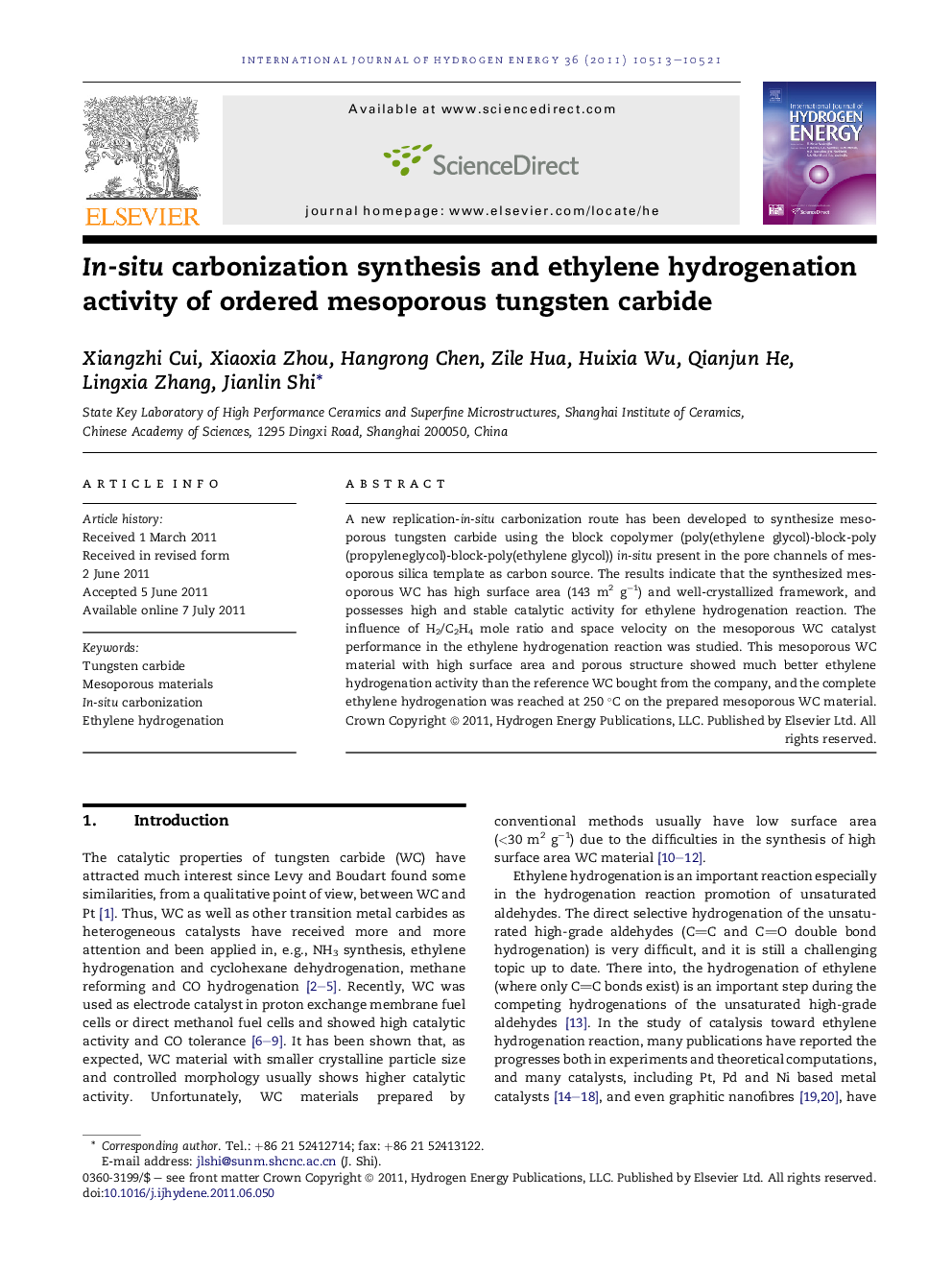| Article ID | Journal | Published Year | Pages | File Type |
|---|---|---|---|---|
| 1277517 | International Journal of Hydrogen Energy | 2011 | 9 Pages |
A new replication-in-situ carbonization route has been developed to synthesize mesoporous tungsten carbide using the block copolymer (poly(ethylene glycol)-block-poly (propyleneglycol)-block-poly(ethylene glycol)) in-situ present in the pore channels of mesoporous silica template as carbon source. The results indicate that the synthesized mesoporous WC has high surface area (143 m2 g−1) and well-crystallized framework, and possesses high and stable catalytic activity for ethylene hydrogenation reaction. The influence of H2/C2H4 mole ratio and space velocity on the mesoporous WC catalyst performance in the ethylene hydrogenation reaction was studied. This mesoporous WC material with high surface area and porous structure showed much better ethylene hydrogenation activity than the reference WC bought from the company, and the complete ethylene hydrogenation was reached at 250 °C on the prepared mesoporous WC material.
► A novel in-situ carbonization replicating method was developed to synthesize mesoporous WC. ► The mesoporous WC showed high catalytic activity on ethylene hydrogenation. ► Ethylene hydrogenation conversion ratio will decrease with the increasing of space velocity. ► Ethylene hydrogenation conversion ratio will increase first and then decrease with the increasing of reactant mole ratio of H2/C2H4.
